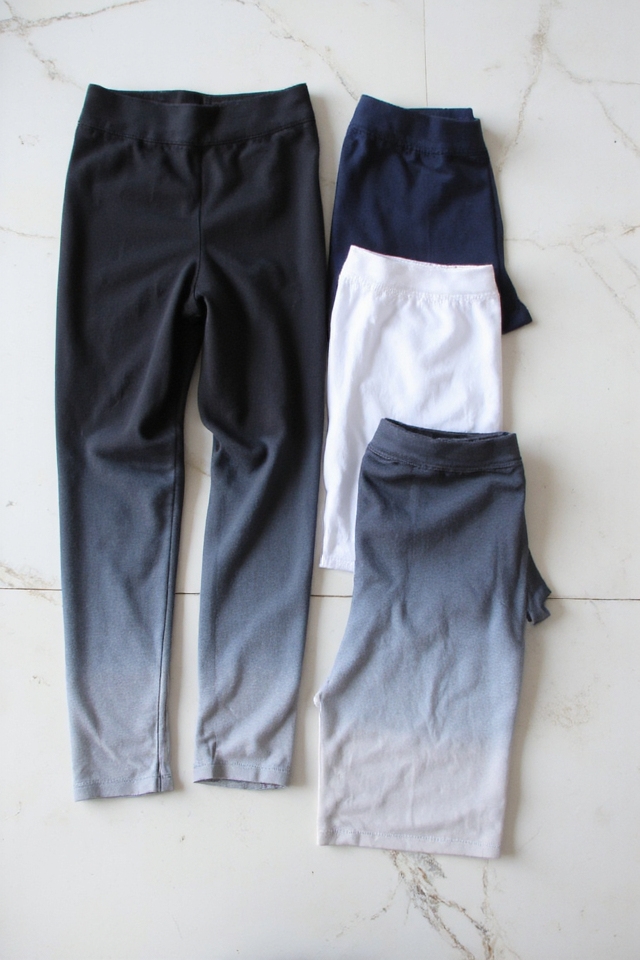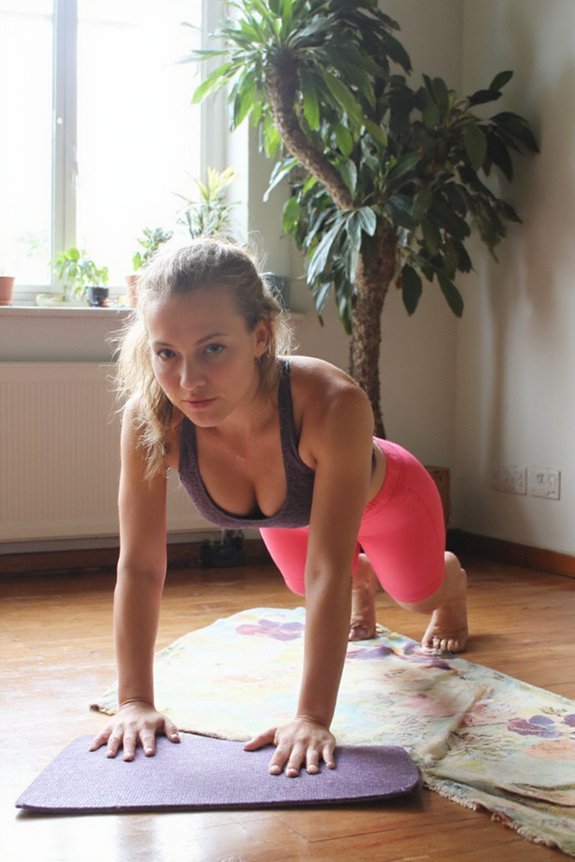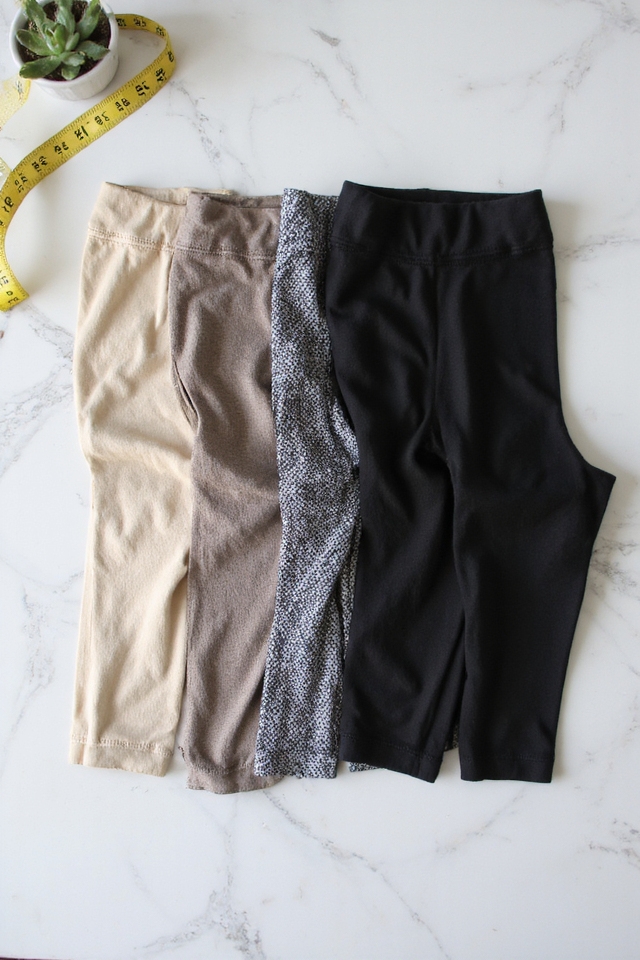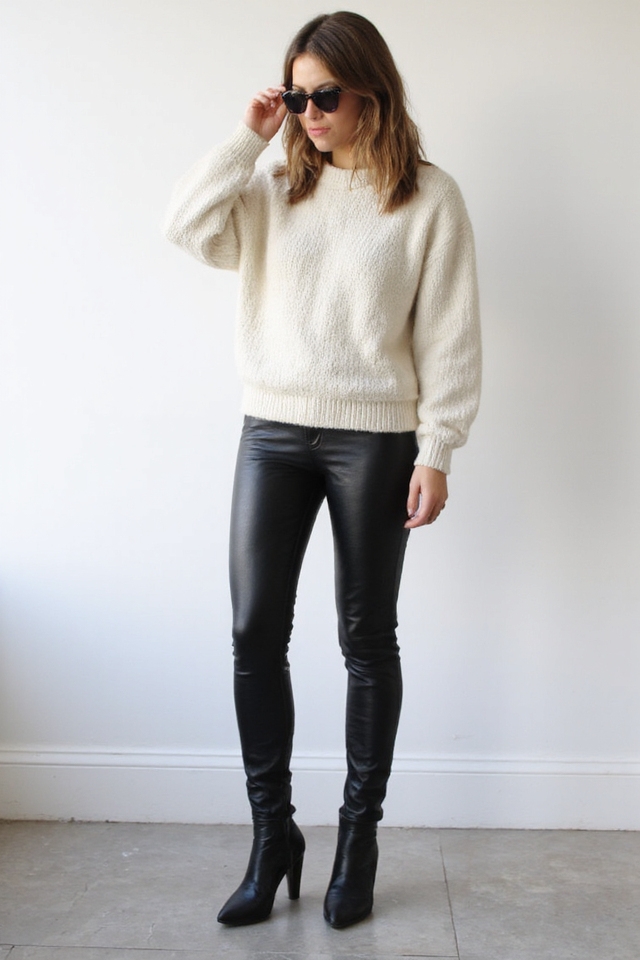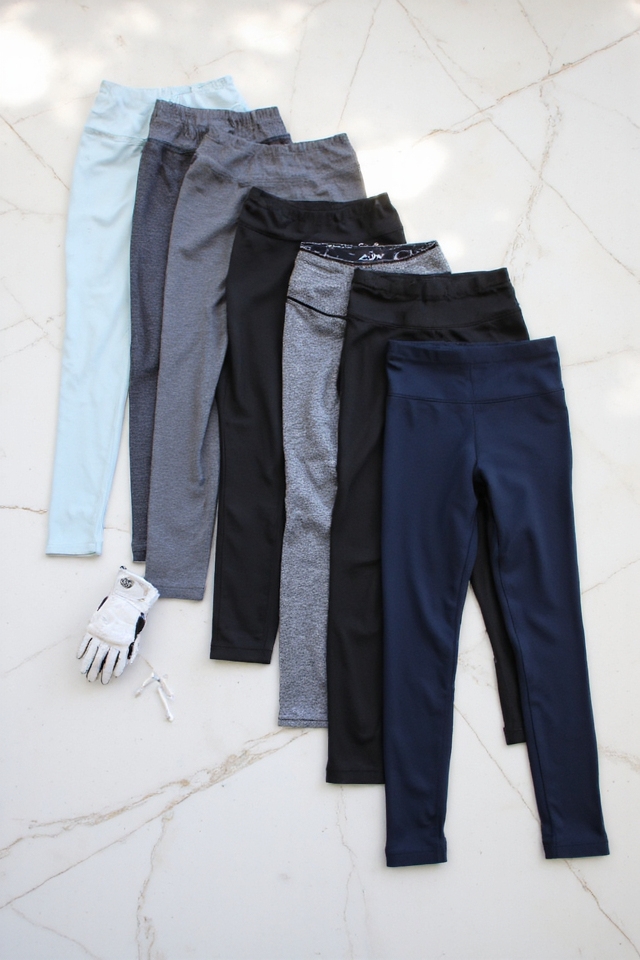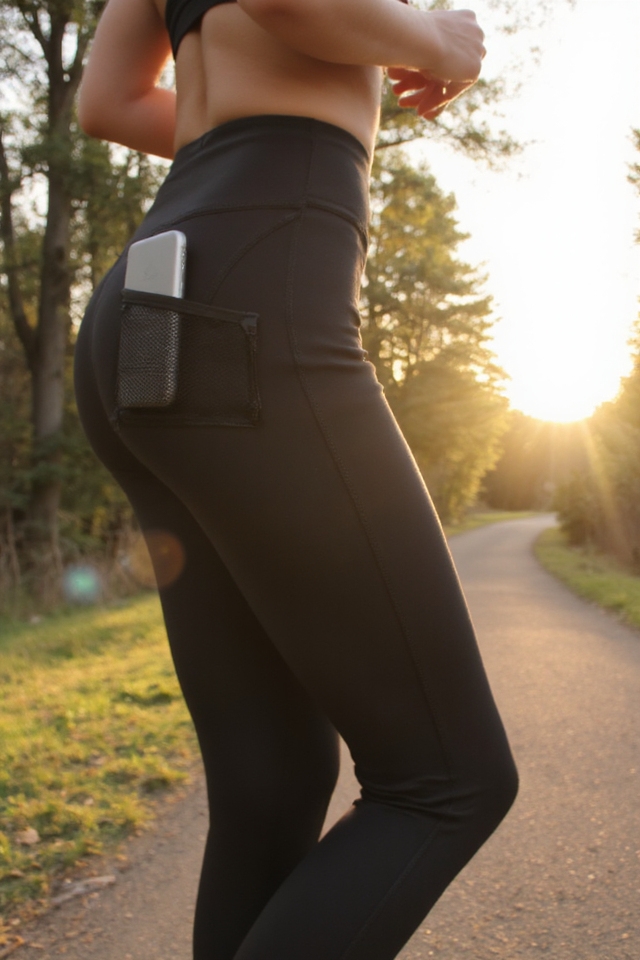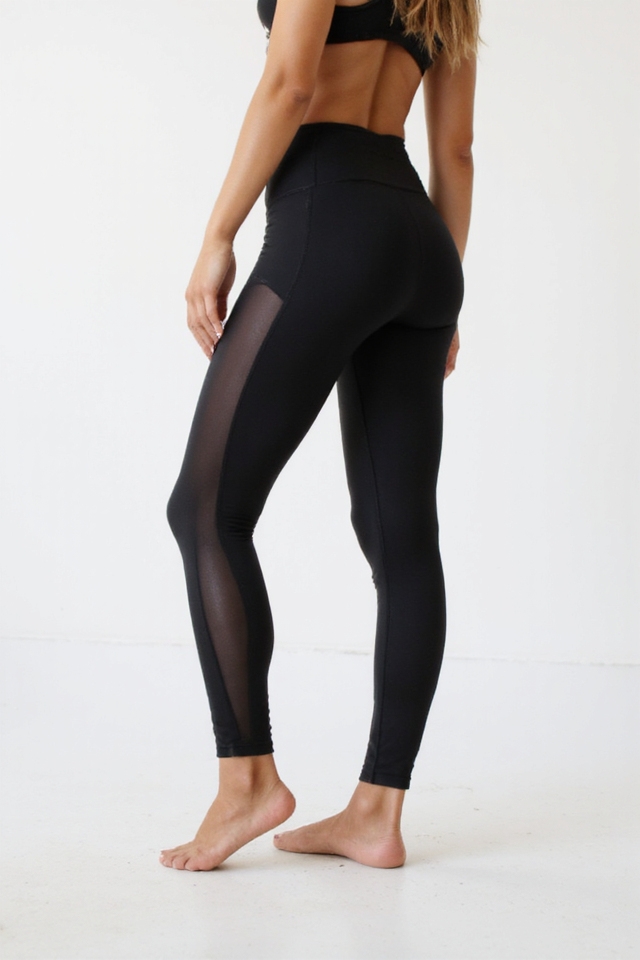You’ll find five crucial compression legging styles that tackle venous insufficiency while keeping you stylishly comfortable. Graduated compression leggings deliver maximum ankle pressure that decreases upward, while medical-grade uniform styles provide consistent support throughout. Anti-embolic designs protect against blood clots during travel or recovery, knee-length options target lower legs under midi skirts, and full-length thigh-highs offer complete hip-to-ankle coverage. Each style combines therapeutic benefits with fashion-forward designs you’ll actually want to wear.
Graduated Compression Leggings for Progressive Pressure Support
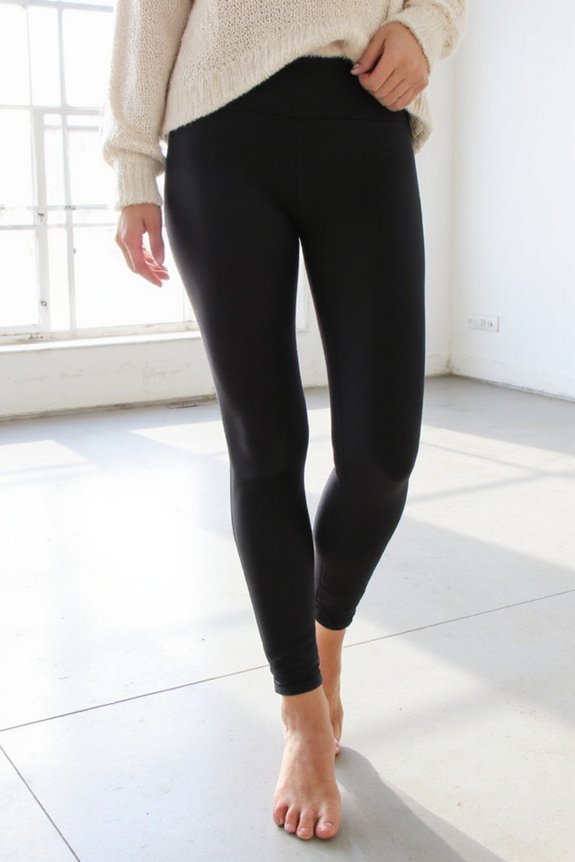
When you’re dealing with venous insufficiency, graduated compression leggings become your secret weapon for both health and style.
These medical-grade pieces deliver maximum pressure at your ankles—typically 20-30 mmHg—then gradually decrease up your legs.
You’ll feel the difference immediately as blood flows more efficiently back to your heart.
They’re sleek under dresses, perfect with oversized sweaters, and incredibly effective for all-day wear.
Medical-Grade Uniform Compression Leggings
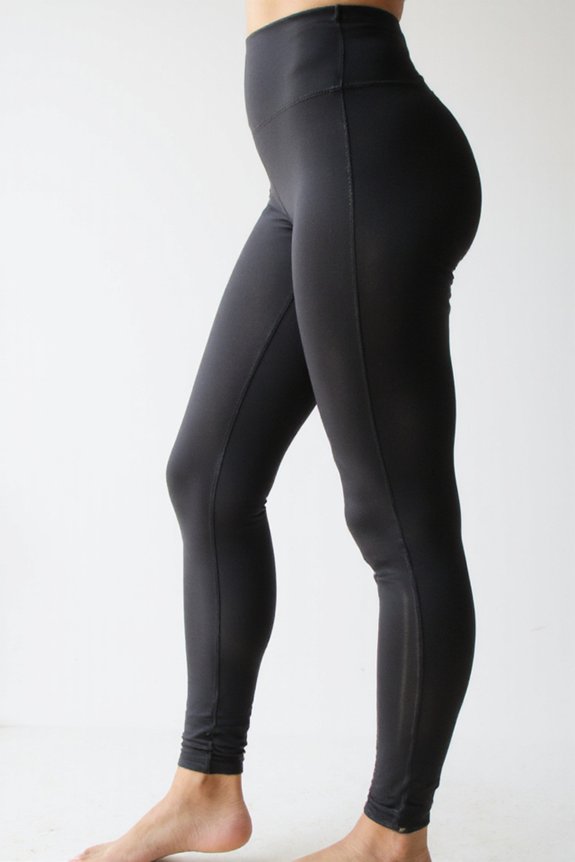
For some medical conditions, you’ll need consistent pressure throughout your leg rather than the graduated approach.
Medical-grade uniform compression leggings deliver steady, even support from ankle to thigh. You’re looking at 20-30 mmHg pressure that doesn’t vary, perfect for managing lymphedema or post-surgical swelling.
These therapeutic leggings come in sleek, discreet designs that’ll work seamlessly under your favorite outfits while providing serious medical benefits.
Anti-Embolic Compression Leggings for Blood Clot Prevention
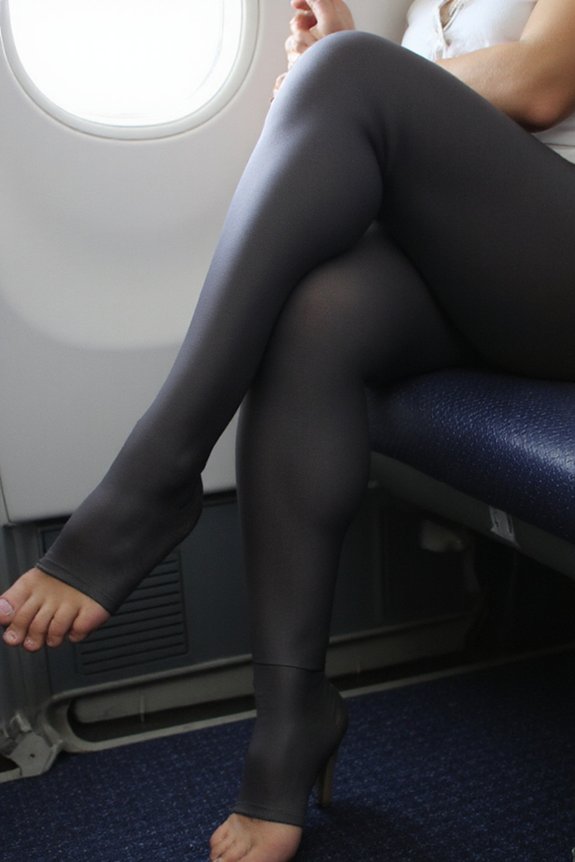
If you’re at risk for deep vein thrombosis or spend long hours sitting, anti-embolic compression leggings are your new best friend.
They’ll deliver graduated pressure that’s strongest at your ankles, pushing blood upward through your veins.
You’ll find these medical-grade pieces in sleek, discreet designs that slip under work attire or travel clothes.
They’re vital protection against dangerous clots during recovery or flights.
Knee-Length Compression Leggings for Lower Leg Support
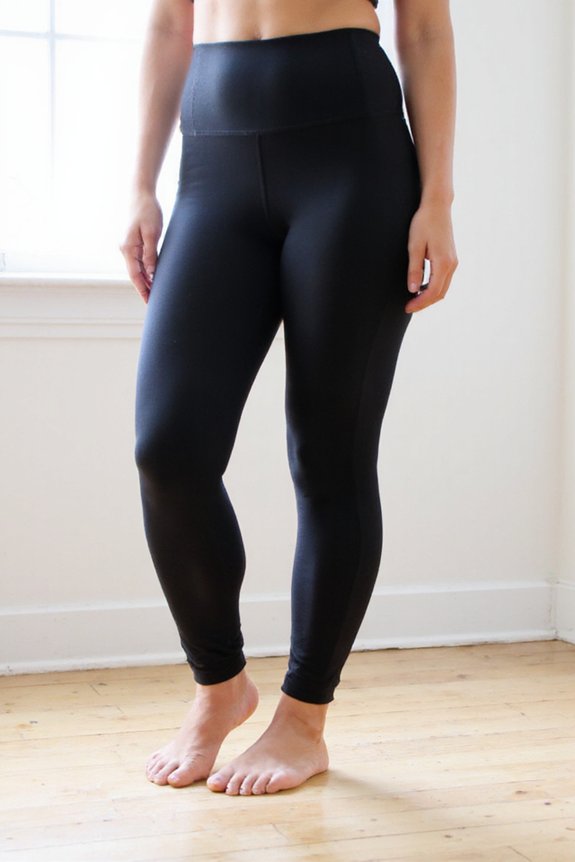
While full-length compression might feel like overkill, knee-length compression leggings target your calves and lower legs where you need support most.
They’re perfect when you’re dealing with mild swelling or varicose veins below the knee.
You’ll love how they fit under midi skirts and cropped pants without bunching.
The focused compression improves circulation right where pooling typically happens, keeping you comfortable all day.
Full-Length Thigh-High Compression Leggings for Complete Leg Coverage
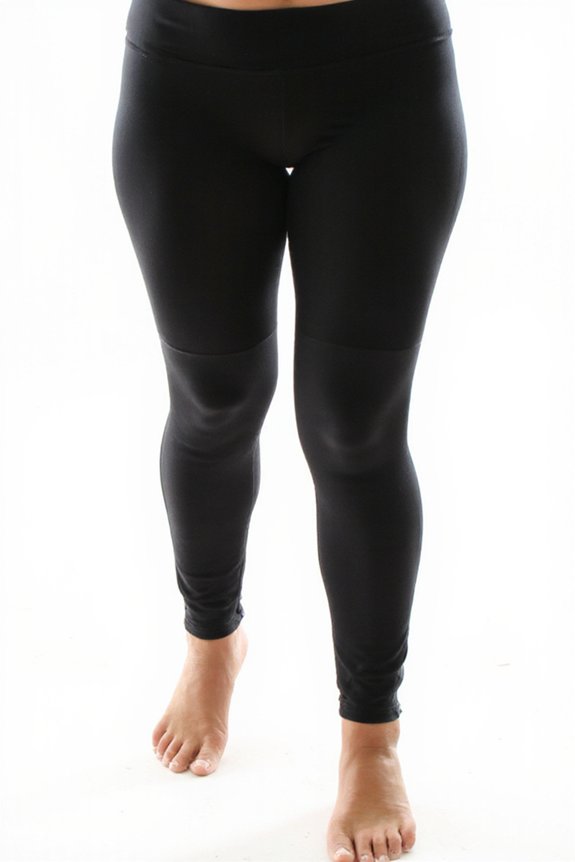
When you need maximum support from hip to ankle, full-length thigh-high compression leggings deliver complete coverage that tackles venous insufficiency throughout your entire leg.
They’re perfect when you’re dealing with swelling or pain that extends beyond your calves. The graduated compression works from your ankles all the way up, promoting better blood flow.
You’ll feel the difference in reduced fatigue and improved circulation immediately.
Frequently Asked Questions
How Do I Measure My Legs for Proper Compression Legging Sizing?
You’ll need a flexible measuring tape for accurate sizing.
First, measure your ankle at the narrowest point, right above the bone.
Then, measure your calf at its widest part.
Next, measure your thigh about 2 inches below your crotch.
Take these measurements in the morning when swelling’s minimal.
Write down each number – you’ll match them to the brand’s sizing chart.
Always measure both legs, as they might differ slightly.
Can I Wear Compression Leggings While Sleeping at Night?
You shouldn’t wear compression leggings while sleeping unless your doctor specifically recommends it.
They’re designed for daytime wear when you’re upright and moving. At night, your legs need a break from that constant pressure.
Plus, wearing them 24/7 can actually irritate your skin or cause discomfort. If you’re dealing with nighttime swelling, try elevating your legs with pillows instead.
Always follow your healthcare provider’s specific instructions about compression wear timing.
How Long Do Compression Leggings Typically Last Before Needing Replacement?
You’ll typically get six months to a year from quality compression leggings with daily wear.
They’ll start losing their stretch and compression power when the elastic fibers break down.
You’ll notice bagging at the knees, loose ankles, or they won’t feel as snug anymore.
Higher-end medical-grade pairs last longer than fashion compression styles.
Replace them once they stop providing that firm, supportive squeeze you need for proper circulation benefits.
Are Compression Leggings Covered by Insurance for Venous Insufficiency Treatment?
You’ll be glad to know that many insurance plans do cover compression leggings when they’re prescribed for venous insufficiency.
You’ll need a doctor’s prescription specifying the compression level and medical necessity. Most insurers require documentation of your diagnosis and may limit how many pairs they’ll cover annually.
Check with your specific plan first, as coverage varies. Medicare typically covers them if you meet certain criteria, but you’ll usually pay 20% after your deductible.
Can I Exercise or Play Sports While Wearing Compression Leggings?
Yes, you can absolutely exercise and play sports in compression leggings!
They’re actually designed to support active movement. You’ll find they enhance your performance by improving blood flow and reducing muscle fatigue.
Choose moisture-wicking athletic compression styles for workouts. They’ll stay put during runs, yoga, or gym sessions.
Just guarantee you’ve got the right compression level – too tight restricts movement, too loose won’t provide proper support during activities.
